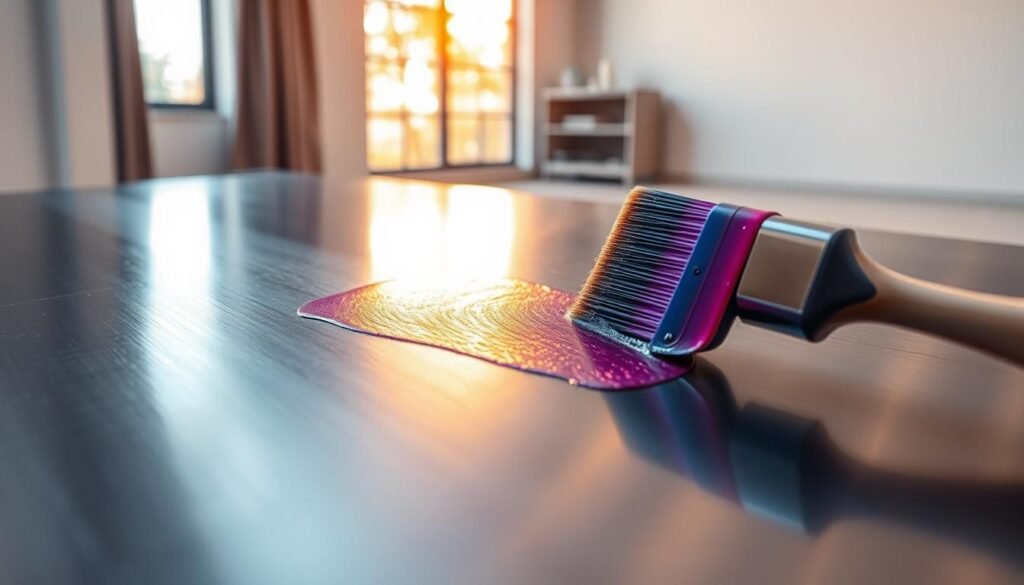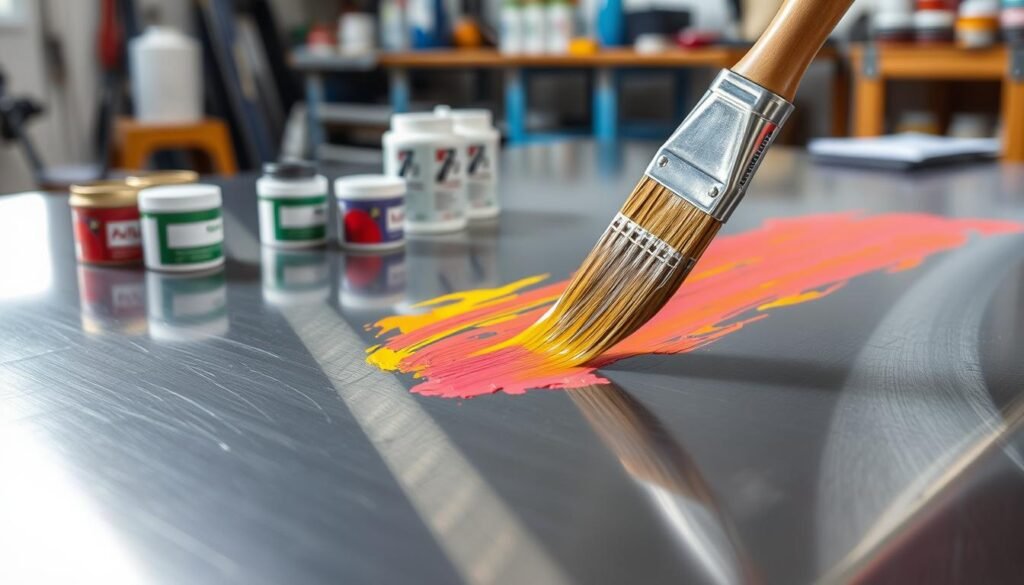Stainless steel is renowned for its sleek appearance and durability. However, there are instances where painting this material is necessary or desirable, such as for product identification or to enhance its aesthetic appeal.
The smooth, non-porous surface of stainless steel poses a challenge for paint adhesion, requiring specific preparation techniques and suitable paint formulations.
This comprehensive guide explores the process of effectively painting steel, including preparation methods, recommended paint types, and application techniques to achieve a durable finish.
Can You Paint Stainless Steel?
While stainless steel is known for its durability and resistance to corrosion, painting it requires special consideration. The process involves understanding the material’s characteristics and preparing it appropriately for paint adhesion.
Painting stainless steel can be a viable option for various reasons, including aesthetic customization and additional protection. However, it’s crucial to comprehend the challenges associated with this process.

Why Paint Stainless Steel
There are several reasons to paint stainless steel. It allows for color customization to match specific design requirements or brand identities. Additionally, paint can provide an extra layer of protection against certain environmental factors.
Challenges of Painting Stainless Steel
Painting stainless steel poses several challenges. The primary issue is its smooth, non-porous surface that hinders mechanical adhesion for most standard paints and primers. Specialized primers are required to overcome this challenge.
| Challenge | Description | Solution |
|---|---|---|
| Smooth Surface | Poor mechanical adhesion due to the non-porous nature of stainless steel. | Use specialized primers designed for stainless steel. |
| Passive Oxide Layer | The oxide layer repels many coating materials. | Apply primers that are compatible with the oxide layer. |
| Temperature Fluctuations | Affects paint adhesion, potentially leading to cracking or peeling. | Ensure proper surface preparation and use appropriate paint. |
Preparing Stainless Steel Surfaces for Painting
The key to a successful painting project on stainless steel lies in thorough surface preparation. This process involves several critical steps that ensure a durable and long-lasting finish.
Cleaning and Degreasing
Before applying paint, the stainless steel surface must be cleaned and degreased. This step removes dirt, grime, and oils that could interfere with paint adhesion. Use a stainless steel-specific degreaser and lint-free cloths to clean the surface thoroughly.
Surface Roughening Techniques
Surface roughening is essential for improving paint adhesion on stainless steel. Techniques include using fine-grit sandpaper (120-220 grit), stainless steel wire brushes, or an orbital sander for larger projects. The goal is to create a surface that is not glossy or smooth.
Tools and Materials Needed
To prepare stainless steel surfaces for painting, you will need several tools and materials. These include safety equipment like goggles and gloves, cleaning supplies such as degreasers and lint-free cloths, and surface preparation tools like sandpaper and wire brushes.
| Tool/Material | Purpose |
|---|---|
| Safety goggles and gloves | Protect against dust and chemical exposure |
| Stainless steel degreaser | Clean the surface |
| Fine-grit sandpaper | Roughen the surface for better paint adhesion |
| Specialized primer | Ensure strong paint adhesion |
Best Paints and Primers for Stainless Steel
When it comes to painting stainless steel, the right choice of paint and primer is crucial for a durable and long-lasting finish. The success of the painting project depends on selecting materials that adhere well to the steel surface and provide the desired protection and aesthetic appeal.
Stainless Steel Primers
A primer specifically designed for stainless steel is essential for ensuring a strong bond between the steel surface and the paint. These primers are formulated to create a surface that paint can adhere to effectively, enhancing the durability of the paint job. It’s crucial to choose a primer that is compatible with both the stainless steel and the intended paint.
Oil-Based and Epoxy Paints
Oil-based paints and epoxy paints are known for their durability and hard-wearing finish. They offer excellent protection against wear and tear, making them suitable for applications where the painted stainless steel will be subject to heavy use. However, they take longer to dry and have stronger fumes compared to water-based options.
Water-Based and Acrylic Options
Water-based or latex and acrylic paints dry much faster than oil-based paints and are generally easier to work with and clean up. Advanced water-based acrylic formulations have improved significantly, offering better adhesion to properly primed stainless steel. They provide faster drying time and come in a wide range of colors and finishes. Applying multiple thin coats is recommended for better results.

Conclusion
The process of painting stainless steel involves several key factors that determine its success. With the right techniques and materials, achieving a durable and attractive finish is entirely possible.
Successfully painting stainless steel requires thorough preparation, including degreasing and surface roughening, followed by the application of a suitable primer and compatible topcoats. Allocating sufficient time for each step, particularly surface preparation and drying between coats, is crucial to avoid adhesion failure.
Whether you’re working on a small project or a large-scale industrial application, the techniques outlined in this guide provide a professional approach to achieving a lasting finish on stainless steel surfaces. By following these guidelines and using the right paint and materials, you can ensure a successful outcome.
